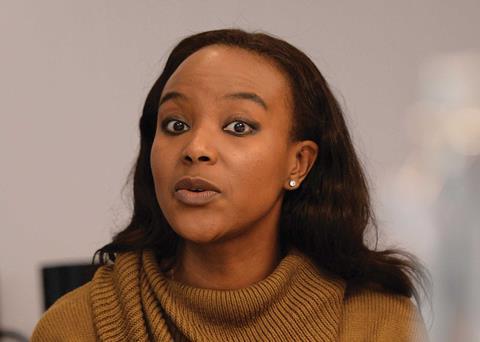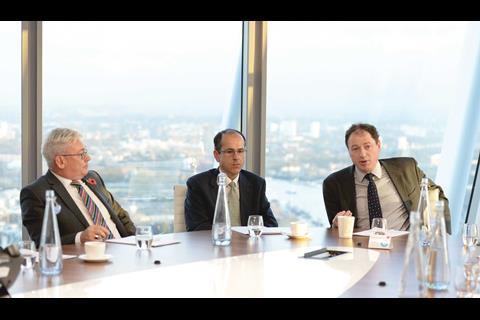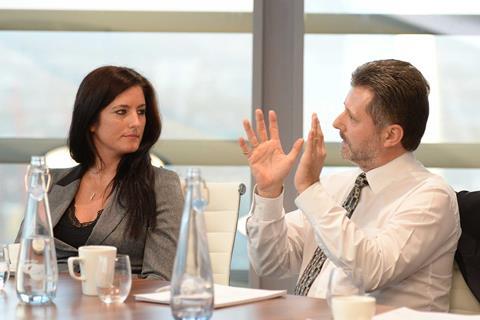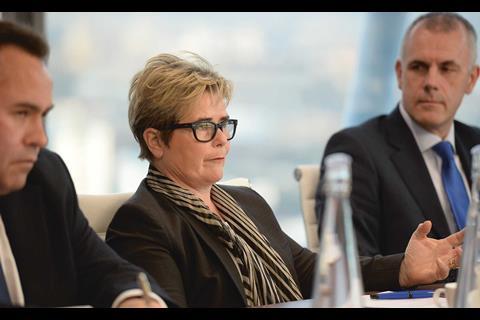While in-house teams are growing stronger, uppermost in lawyers’ minds are ways to control costs and broaden skill-sets.
There are now more in-house lawyers than ever before, with some teams growing dramatically in size. But what sits behind this growth and what challenges is it bringing for those running the teams?
The downturn forced in-house teams to look very carefully at their organisations’ legal spend and consider whether it is more cost-effective to broaden their skills. However, growth in the sector is not just about controlling costs, but also increased commerciality and responding to the changing regulatory environment.
It has also put in-house teams in the driving seat when it comes to their partnerships with private practice. Heads of legal are casting sceptical eyes over some of the big, headline-grabbing offerings, and the ambitions of some of the bigger firms to do more work for fewer clients.
At the same time, there are new roles for in-house lawyers, for instance within law firms. There are also new functions – some local authority legal teams, for example, are effectively operating as private practices, generating income through shared services and partnerships, while investigating the options offered by alternative business structures.
As in-house teams have grown bigger, so they demand a broader skill-set, including non-lawyers, as well as posing challenges in terms of career planning and managing the expectations of lawyers within the team. It is clear that, to reach the top, in-house lawyers’ careers tend to be varied, with our roundtable guests jokingly describing their career paths as ‘promiscuous’.
So, how is the sector coping with the ‘new normal’ – the economy may be picking up, but that does not herald a return to the ‘old days’ where private practice could write their own cheques.
The latest Gazette roundtable, hosted by DWF, brought together the heads of legal from different sectors to debate how they see the future. The focus was corporate counsel working in a commercial environment, joined by Kent County Council whose legal team had devised a commercial response to cuts in its public funding.
Funke Abimbola, managing counsel for bio-tech giant Roche in the UK and Ireland, says the downturn has had a ‘huge impact’ on in-house teams, which have had to find more cost-effective ways of providing legal support.
She heads a five-strong team, four of whom are lawyers, covering the full range of legal work affecting Roche, from clinical trials through to getting the product out into the market.
Abimbola was hired in 2012 into a newly created role. ‘Incredibly, there’d been no one heading up the function in quite this way before,’ she says. ‘Not only was it costing money to buy in that expertise, but having it in-house means you can get closer to your internal clients, build relationships and demonstrate value. That was a real push for us.’
Changes to in-house teams are ‘definitely cost driven’, agrees Christopher Arnull, solicitor and director at KPMG (distinct from KPMG Legal), which provides audit, tax and other advisory and consultancy services. He runs a department of lawyers and non-lawyers which deals with contracting for those services.
‘Sending matters out to external lawyers is very expensive with, inevitably, an inbuilt delay,’ he says. ‘So, if you’ve got your resource there on tap, it makes everything much easier.’
Nick Economakis, general counsel of G4S Risk Management, which deals with security in ‘hostile’ environments, sums up the change as: ‘God bless the regulators. You used to do commercial contracts, joint ventures, that kind of stuff. Since the financial crisis, you have the Financial Conduct Authority, the Bribery Act, you’ve got corporate manslaughter. Companies want someone who understands their business and can advise them proactively on the risks – that’s been a great source of work.’
Bruce Macmillan was start-up general counsel with the Legal Services Board before joining Visa Europe in 2012 as executive director, senior commercial legal counsel. He is now working with high-tech legal start-up Legal Practice Technologies, which has teamed up with the Law Society to develop the new online conveyancing system Veyo, expected to go live next year.
The growing volume of regulation has been key for in-house lawyers, he agrees. ‘You often have a multi-year lead time to change certain things in the business, such as IT systems, finance systems, pay and bonus policies, as a result of a law coming through. You can tell how switched on law firms are by the ones that are telling you nine months or more before that something is coming in, so that you have time to implement the change, rather than three months after.’
Understanding and managing risk is a defining characteristic of an in-house lawyer which, as our attendees stress, goes far beyond legal risk to take in commercial and reputational risk.
‘When you work for a company called Risk Management,’ Economakis reflects, ‘you don’t really have any other option but to focus on it. It’s a given that you understand legal risk, but you will be expected to pick up on any operational or commercial risk as well, and say, “Wait a minute, let’s just go back and revisit that”.’

As a client you really can call the shots now. Many firms are terrified of losing long-standing clients and will do lots of extra things, such as writing off time and offering training
Funke Abimbola, Roche
He adds: ‘There are very few times that the board will ask you for black letter law advice. They will be looking for you to use your judgement, and your skills and training to add value to the business. We all know that it’s quite difficult, as in-house lawyers, to show value because you’re a cost centre. What has changed from the dark ages when I started in-house is that boards really get that value now.’
As in-house teams grow, there is a balance to be found in externalising work, Deborah Grimason, general counsel and company secretary of Travis Perkins, says. She has 28 people in her team, who look after legal services, as well as company secretary responsibilities, discipline, share-scheme administration, insurance and pensions.
She has seen many ‘cycles’ since she trained in-house in a legal department with 130 lawyers. ‘Businesses then got rid of their legal teams but they are now building them up again, because in-house lawyers understand the business’s needs and how to create solutions,’ she says.
But there are financial challenges to consider. Dealing with a project in-house, it may not be possible to capitalise the cost of the people working on it unless a separate structure is set up, she says. ‘So, is it actually more tax- and financially efficient if you put certain discrete projects out? There are lots of things to balance.’
For James Pigott, head of law, commercial and environmental at Kent County Council, the advantages of getting bigger are the economies of scale, which help the in-house team build capacity and expertise, and ensure better use of premises with potentially cheaper IT licences.
‘But, as a bigger function, there comes a time when you need to look outside for clients to gather in more work to feed the animal,’ he says.
Kent Legal Services already generates income which helps subsidise its costs and is looking at the opportunities offered by alternative business structures. ‘There are other councils who operate the same model and many others are looking at it too,’ he says. ‘But they can’t all do it, otherwise they’ll all be selling services and no one will be buying!’
He adds: ‘But the financial pressures on local government are absolutely eye-watering. There is a huge amount of work for us to do, but we have to find other sources of income.’
When it comes to buying in external legal advice, there have been some headline-grabbing deals, such as Eversheds’ multi-million-pound annual retainer with Tyco International, and its contract as the primary legal services provider for the International Air Transport Association.
But, with so many pressures on in-house lawyers, Gazette features editor and former editor of In-House Lawyer , Eduardo Reyes asks if there is a ‘natural push back’ against the more elaborate structures for handing out legal work to external lawyers? ‘I think we’re all gradually getting a bit more sophisticated in what we do because there are more options available,’ Macmillan says. ‘But the big-ticket solutions, the emblematic ones, only work in very particular circumstances. You’ve got to have a lot of client buy-in and team buy-in to do it. Sometimes it’s possible, sometimes not.’
So how are in-house counsel choosing their external partners?
There is a lot more variety than five years ago, Economakis says. He uses DWF, which does an ‘absolutely fantastic job’, he says: ‘But there might be other matters where your board would expect you to use a magic circle firm if it’s extremely high-reputation or a deal of a particular size. Then there’s the third way using the Axiom or Obelisk model, which will be right for other kinds of deal.’
This has meant a lot more competition for traditional law firms, he says, a view shared by Abimbola. ‘What has become really noticeable as a result is the tremendous value we can get out of external advisers,’ she says. ‘As a client you really can call the shots now. Many firms are terrified of losing long-standing clients and will do lots and lots of extra things, such as writing off time and offering training.’
At the table: Steve Gauke, Law Society; Deborah Grimason, Travis Perkins; Derek Ellery, DWF; James Pigott, Kent County Council; Nick Economakis, G4S Risk Management; Bruce Macmillan, Visa; Grania Langdon-Down, Law Society Gazette; Hayley Leake, Burford; Christopher Arnull, KPMG; Eduardo Reyes, Law Society Gazette; Funke Abimbola Roche
DWF partner Derek Ellery is the firm’s chief counsel and heads its in-house legal function. From the private practice perspective, he says they have dozens of secondees out at any one time with clients. ‘I certainly think it is good for us,’ he says, ‘because it means you have someone in the organisation. But it’s amazing how people do “go native” eventually, so I suppose you’ve got to watch that you are not just training people up to benefit another organisation.’
What has caught the eye of Hayley Leake, corporate counsel and chief compliance officer for litigation funder Burford Capital, is the way firms are prepared to do ‘more interesting and flexible things around fees. We’re seeing more of that and I think it could go further still’.
With budgets shrinking, Macmillan says firms need to work out what their brand means to the client, because it needs to be more than any one partner. ‘If a law firm wants to have more of my wallet they’ve got to go wider, not just deeper into a particular specialism,’ he says.
‘Deeper is ultimately going to bottom out, as you get all of my spend in that area, and then it shrinks year on year as my overall budget is normally subject to cuts annually.’ So, he says, a relationship that is based purely on one partner or supporting one business department, such as marketing, ‘is getting increasingly problematic’.
‘An awful lot of firms are still very focused on that one partner who treats me on a transactional rather a relationship basis. That partner views my workload reactively and thinks of my spend as being “lumpy” rather than proactively looking forward at my business plan with me and thinking, “It says they’re doing some investment in March or April. That probably means they’ll need some M&A work, so why don’t I talk to them in January or February about it?’’.’
For Arnull, relationships are still key: ‘You’re right in saying there can be an unhealthy focus, from the law firm’s perspective, on one partner. But relationships are what drive the ties between client and law firm. That’s why a partner will leave and go to another firm and the work will go with him or her, because of the strength of the relationship.’
Grimason agrees: ‘The term I like to use is that the external law firms are an “extension” of my in-house team. I am really trying to bring them to the party by saying you need to work together as a seamless legal team, encouraging them to work across the piece and with my team and with the business.’
‘That’s the pot of gold for the law firm,’ Arnull notes.
So are law firms that say they want to get more work from fewer clients on the right track? ‘I shy away from that, actually, if I’m honest,’ Abimbola says. ‘I don’t want to be overly reliant on one provider.’
Macmillan says it is the ‘right aspiration for them to have, and sometimes it becomes irresistible if they’re offering something that really works – and this is frequently about how they deliver their legal advice – the process – and not just the technical quality of the advice’.
He gives an example of a firm which came up with an innovative process and it went from having no work with them to, six months later, having all of their spend in support of that business area across Europe. Other business areas also wanted to use the same structural model to receive their legal advice because of the cost, consistency, presentational and timing benefits it brought.
‘Did I feel happy about that? Yes,’ he says. ‘Did I feel uncomfortable as well because I was getting into bed with one firm? Yes. But the trade-off made sense in this case. However there is a dynamic tension between what a law firm will do to make sure I become that big, long-term client, and in becoming something you feel uncomfortable about because of the dependency on that firm that this creates. You are exposed to [risks] personally if the firm’s quality and consistency of delivery and/or price starts to slip in future.’
‘You have to link in the competitive tension,’ agrees Grimason, ‘but at the same time the more work you give a firm, the more value-add they’re going to bring to you, such as free-of-charge secondees or free training.’
So, having developed your relationship with external partners, how do you shine within your organisation?
Much of what in-house lawyers do goes unseen, Pigott says: ‘Lawyers can be heavily involved in deals, but do the client or your employer realise how important your input was? You have to make it clear to them, so we do quarterly reports, bringing that information out and putting it in financial, added value or risk awareness terms.’
‘For a smaller team like mine,’ Abimbola notes, ‘it’s all about being visible. The way we demonstrate value is to make sure that people see us at meetings, giving presentations. We make sure our names are constantly being mentioned.’
One key way of being visible is by giving training, says Leake, ‘not just to your lawyers but to other functions in the business, which helps build awareness of the added value you bring’.
Having established the in-house team’s credentials, the discussion turned to managing the career paths of lawyers in what is generally a much flatter structure than private practice.
One of the consequences of the downturn, says Abimbola, is that in-house opportunities suddenly looked far more appealing. ‘I moved in-house at the height of the recession because I perceived that it would be much more exciting and it has turned out to be exactly what I hoped for,’ she says. ‘Even now, the number of private practice lawyers wanting to move in-house far exceeds the opportunities, which means you can recruit top talent into your team.’
In one of his roles, Macmillan says that the organisation consciously adopted a career path with a ‘Y’ fork in it. Those wanting to specialise in a subject matter area could go down one arm of the ‘Y’ in terms of job roles, career progression and growing their expertise, though ultimately they would have to move job types or companies to gain promotion.
Those wanting to develop a more business partnering and people management profile could go down the other arm of the ‘Y’ and be rotated through different areas of the business, rounding out their skills so that they could end up as head of a department or head of legal, either in their own team or elsewhere.
Both are legitimate career paths, he says. But it is very important to discuss with new recruits from the outset and repeatedly during their time with you the idea that they are on a ‘career voyage’ due to the limited size of in-house teams. ‘If you don’t have that conversation, you are being unfair on them and on the organisation,’ he says.
Arnull remembers someone in the early days of his in-house career commenting that he had ‘lawyer’ written on his forehead. With hindsight, he realises the person was saying he should become a business adviser, with legal skills as a string to his bow, so people came to him because he was a useful person to know, not because he had ‘lawyer’ written on his door.
With the growing emphasis on lawyers taking on more business roles, is there push back from others in the organisation?
‘I think clients can be surprised that you want to get involved to that level,’ says Pigott. ‘Sometimes you have to sell yourself and show that you are going to bring something that they haven’t already got. As long as you can do that then you’ll be welcomed in, but getting through the door can sometimes be hard.’
Abimbola was asked to step into a commercial role a year ago. She admits being very concerned because she felt there were others better placed to do it.
‘But the then finance director felt very strongly that I was the right person,’ she recalls. ‘It was a real stretch but it has been a wonderful opportunity and I’ve developed into the role. Was there resistance? Absolutely, from those who felt it should have been them, though I would add the caveat that this was the first time such a role had been given to a lawyer.’
The key, says Ellery, is to set out ground rules. ‘I was managing partner in my previous firm, so I tend to take a robust and hands-on approach,’ he says. ‘But the danger is making sure I’m not both advising and making the decisions. Getting too close to the business decision [can impair] your ability to give advice in a dispassionate way.’
Abimbola agrees: ‘I insisted the overall project lead was still ultimately accountable for all the stakeholder management and decision-making, and liaising with NHS England, and that there was no way that I was going to be expected to do that.’
Steve Gauke, relationship manager with the Law Society responsible for building links with general counsel, says some companies are asking whether they need a lawyer to fill the head of legal position because the skills required centre around people management and the career development of teams, rather than legal advice.
‘You are looking for a different skill-set,’ Macmillan agrees. ‘You are looking for people managers and team players who can collaborate, rather than lone wolves. I’m also increasingly looking for non-lawyers within my team – someone with IT competence, for example, to help build the internal share point and make it work properly. People with good financial and budgeting or training skills, so that I don’t have to use one of my expensive lawyers to do something that is not the best use of their skills and time.’
To round up the debate, Reyes asks the attendees how their budgets are looking. The general view is positive. While core budgets for some are shrinking year on year, the overall legal spend they control may go up where the cost is tied into work for a particular department and becomes part of its cost of sale.
What is clear from the debate is that the profile of the in-house community is rising. Any notion that in-house lawyers are ‘second-cousins’ is well and truly a thing of the past.
Grania Langdon-Down is a freelance journalist
- The GC 350 Engagement Programme will be launched at the Law Society, 113 Chancery Lane, London WC2A 1PL, on 4 December from 5-7.30pm. Royal Dutch Shell legal director Donny Ching and former MP David Howarth, author of Law as Engineering, will be speaking at the seminar. For more details, go to the LS events page.







































No comments yet